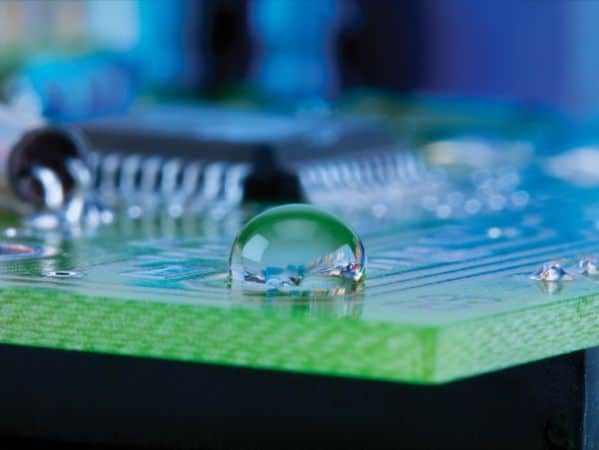
Increasingly, plastic encapsulated components, semiconductors, are being manufactured in smaller sizes. Components such as thin fine-pitch devices and ball grid arrays could be damaged during SMT reflow when moisture trapped inside the component expands. These types of surface mount components need to be protected from the humidity that occurs in the factory environment. A component that has accumulated moisture can become a major issue in surface mount assembly.
Moisture from atmospheric humidity enters the component by diffusion. Assembly processes used to solder components to the printed circuit boards expose the entire package body to very high temperatures. This causes the trapped moisture to expand which may result in internal separation of the plastic from the die or lead-frame, wire bond damage, die damage, and internal cracks. Most of this damage is not visible on the component surface. In extreme cases, cracks will extend to the component surface. In the most severe cases, the component will bulge and pop.
I see one of the greatest problems in the industry, especially among contract manufacturers, is that frequently there is a lack of a comprehensive and complete implementation of a process for handling Moisture Sensitive Devices. Companies tend to focus on training their production operators on proper ESD control. There needs to be a similar commitment when handling Moisture Sensitive Devises.
Moisture sensitive devices are a serious assembly issue that requires a high level of control. A lack of proper control will create insidious latent component defects that can escape inspection and test. The real root of the problem is that because the threat is not measurable and only becomes apparent later in the life cycle of the product in the field, the perception of the threat is not real at the manufacturing level.
Prevention is the key. Manufacturers need to be proactive in ensuring that their factory environment and handling processes of moisture sensitive devices is not compromised during the assembly process.
Dry Boxes and Dry Baking Cabinets are becoming an essential part in the process of ensuring the integrity of Moisture Sensitive Devises You only have one opportunity to do it right. The best option is to adopt a moisture management system. This typically is comprised of a time tracking system and the use of dry cabinets. This is a pro-active step rather than a reactive approach. It can prevent moisture absorption and it can dry or dehumidify components that may have absorbed some moisture. The best and simplest way to eliminate moisture-induced failure may reside in preventing moisture from being absorbed by the components.
From a business perspective, the cost of a little prevention far outweighs the cost of field failure. We have numerous sizes of Dry Boxes and Baking Dry Boxes to meet your company’s specific needs. SMT Industrial is the largest distributor of Dr. Storage in North America.
Geoff Zacour
President
SMT Dry Cabinets
